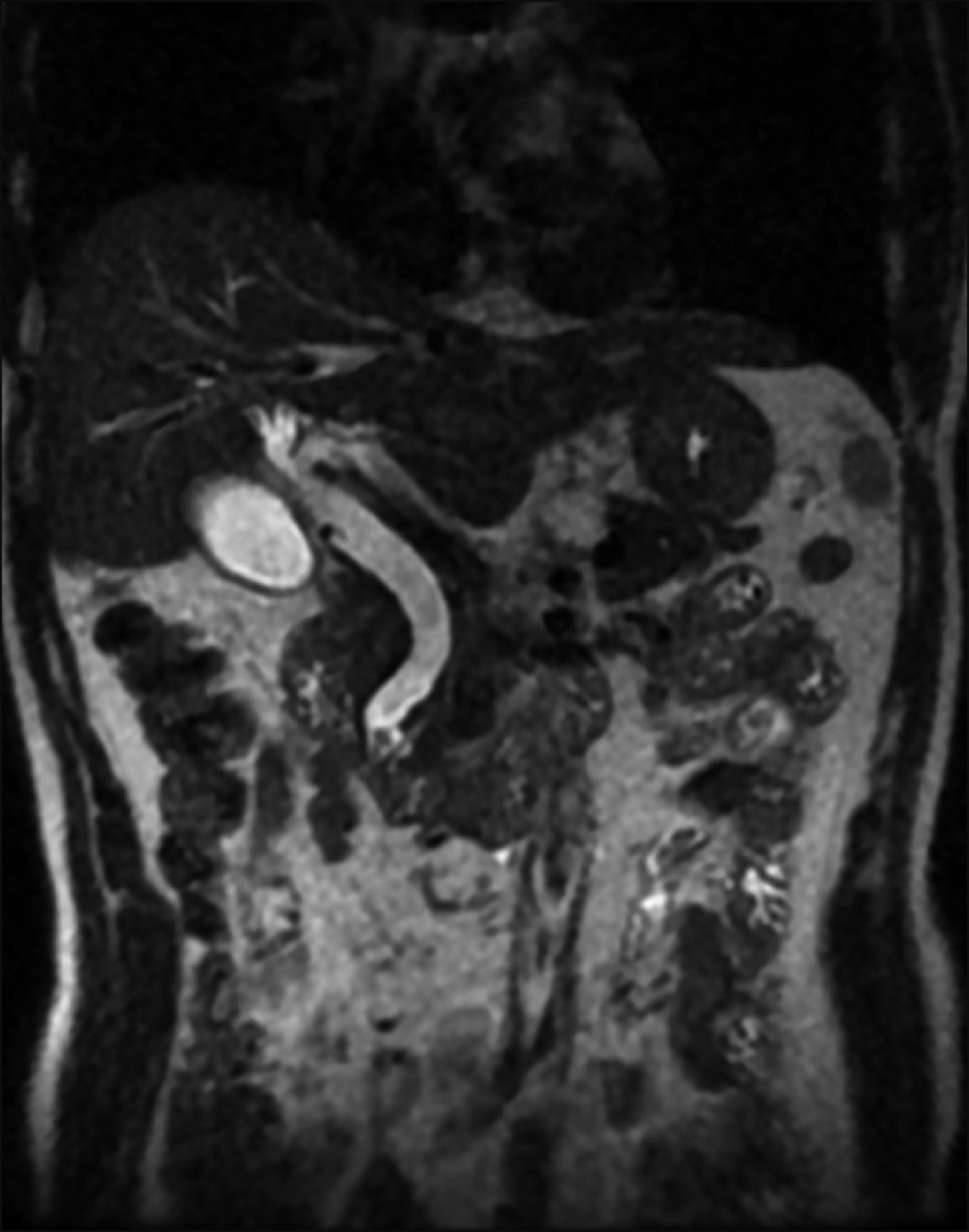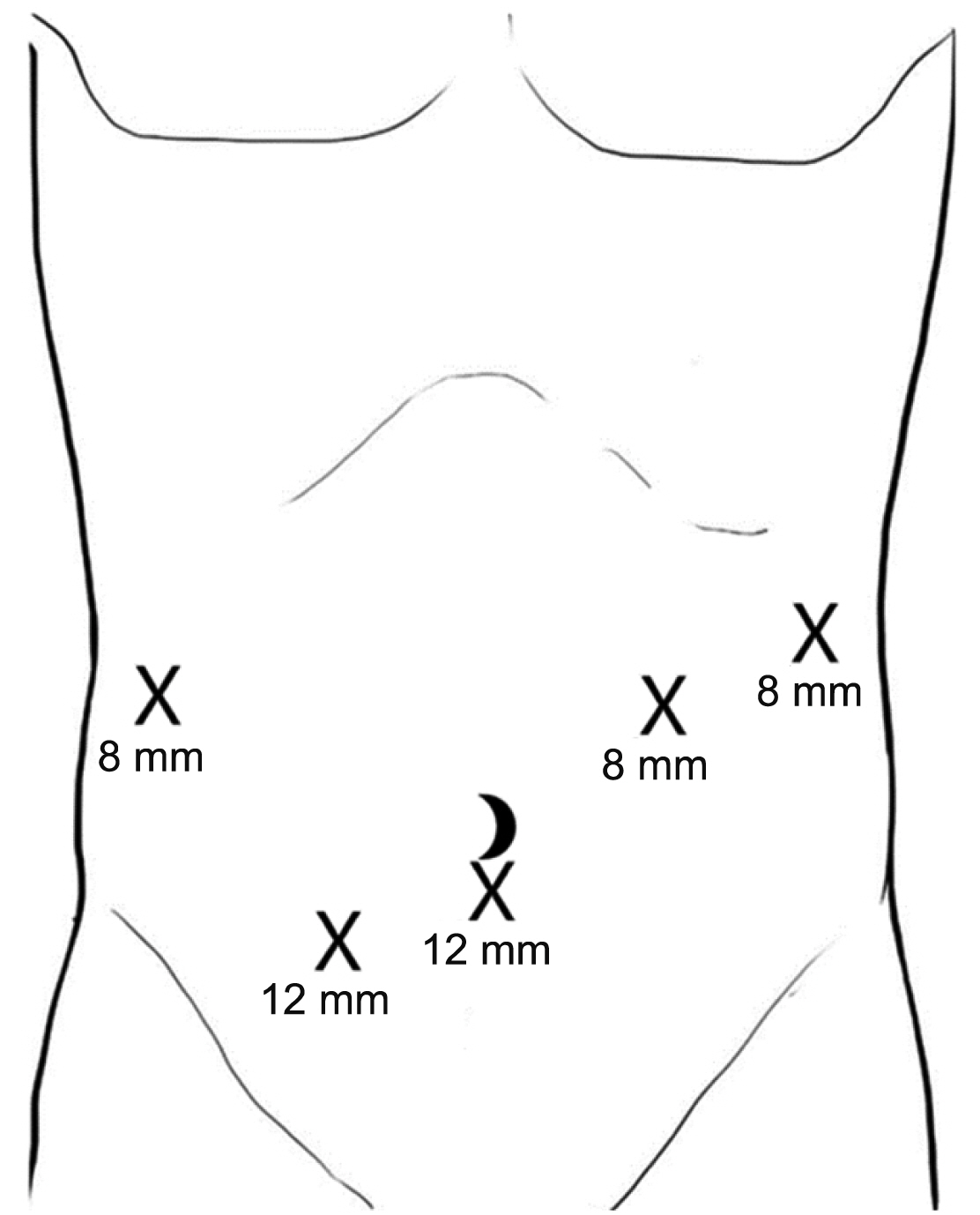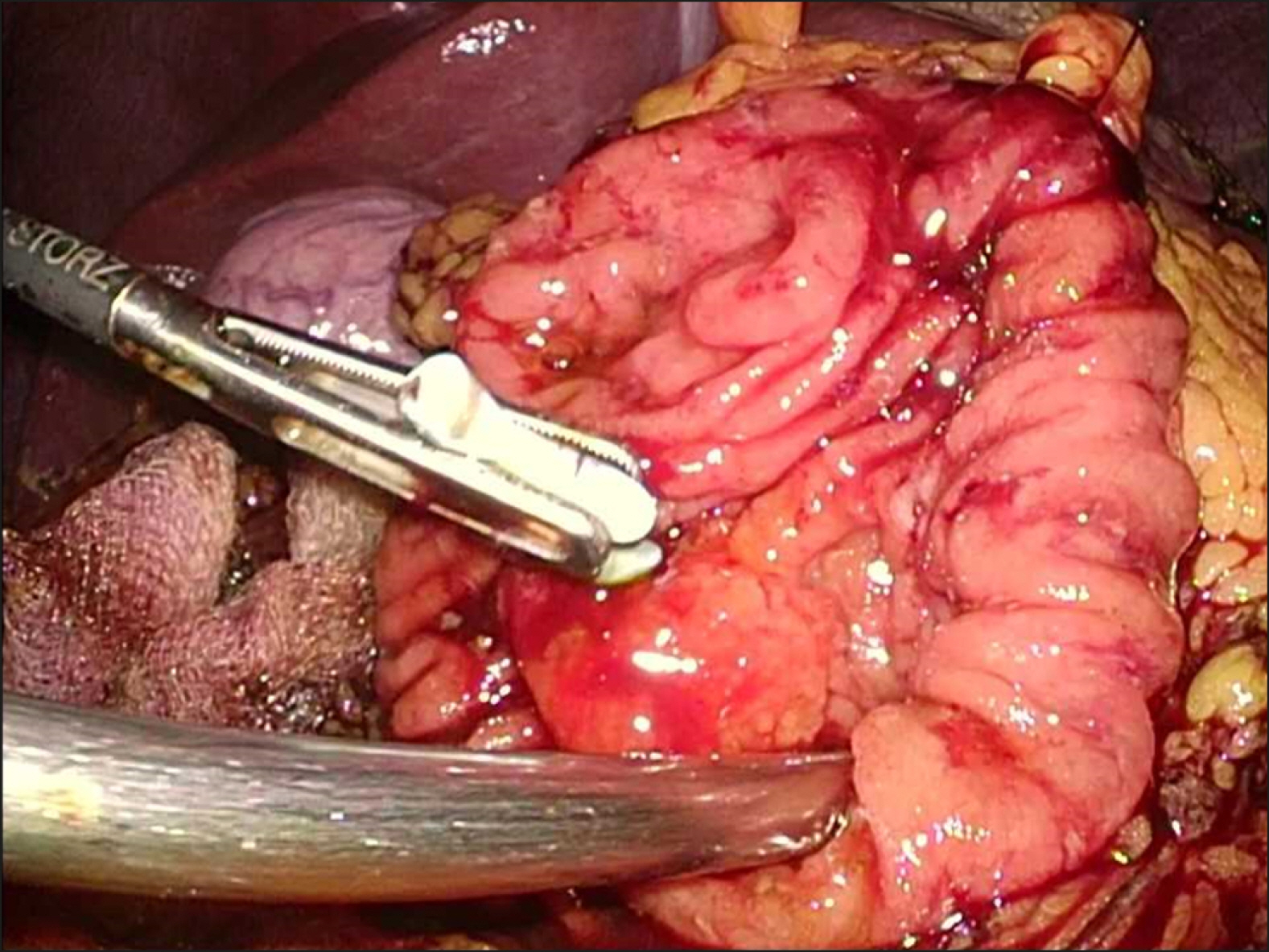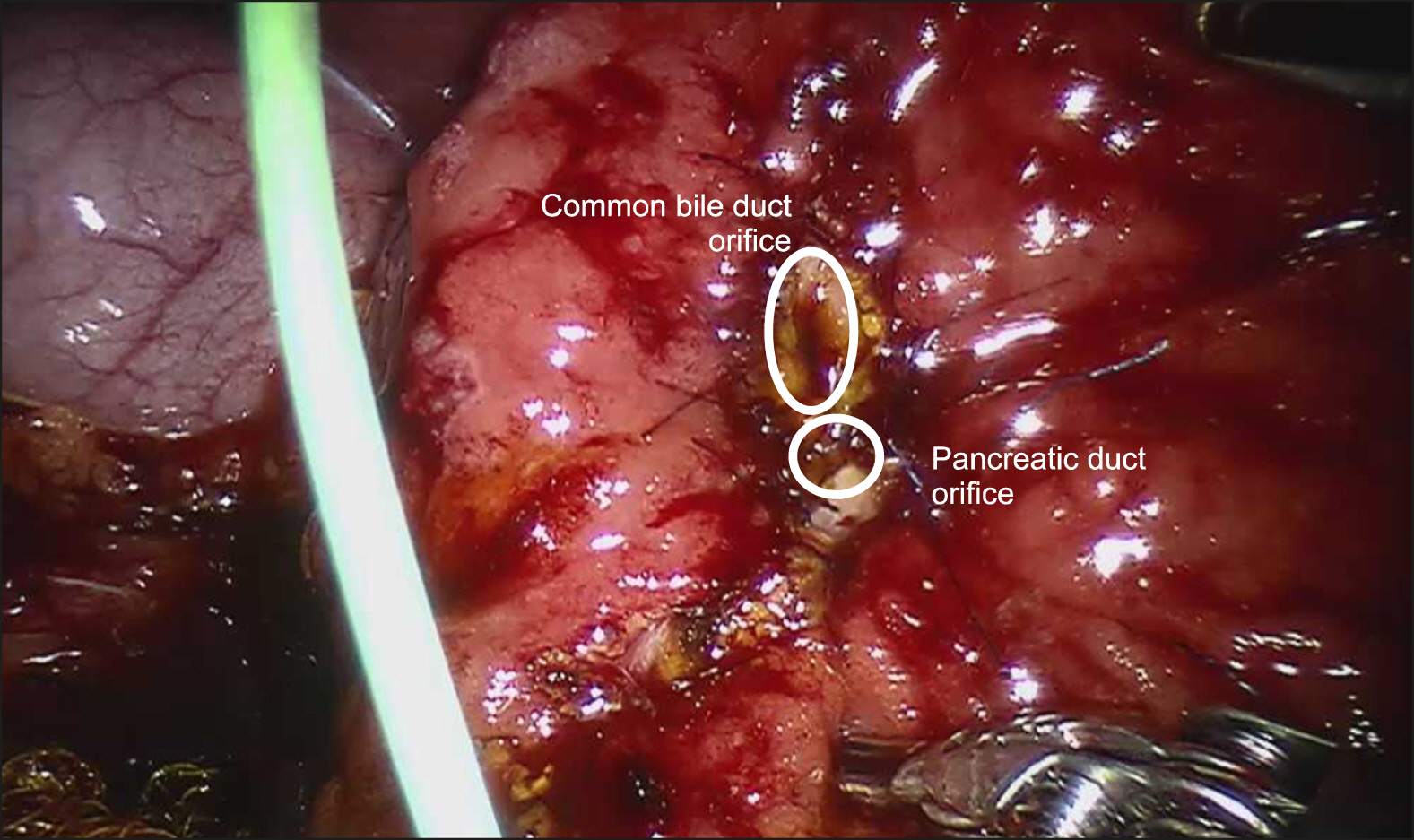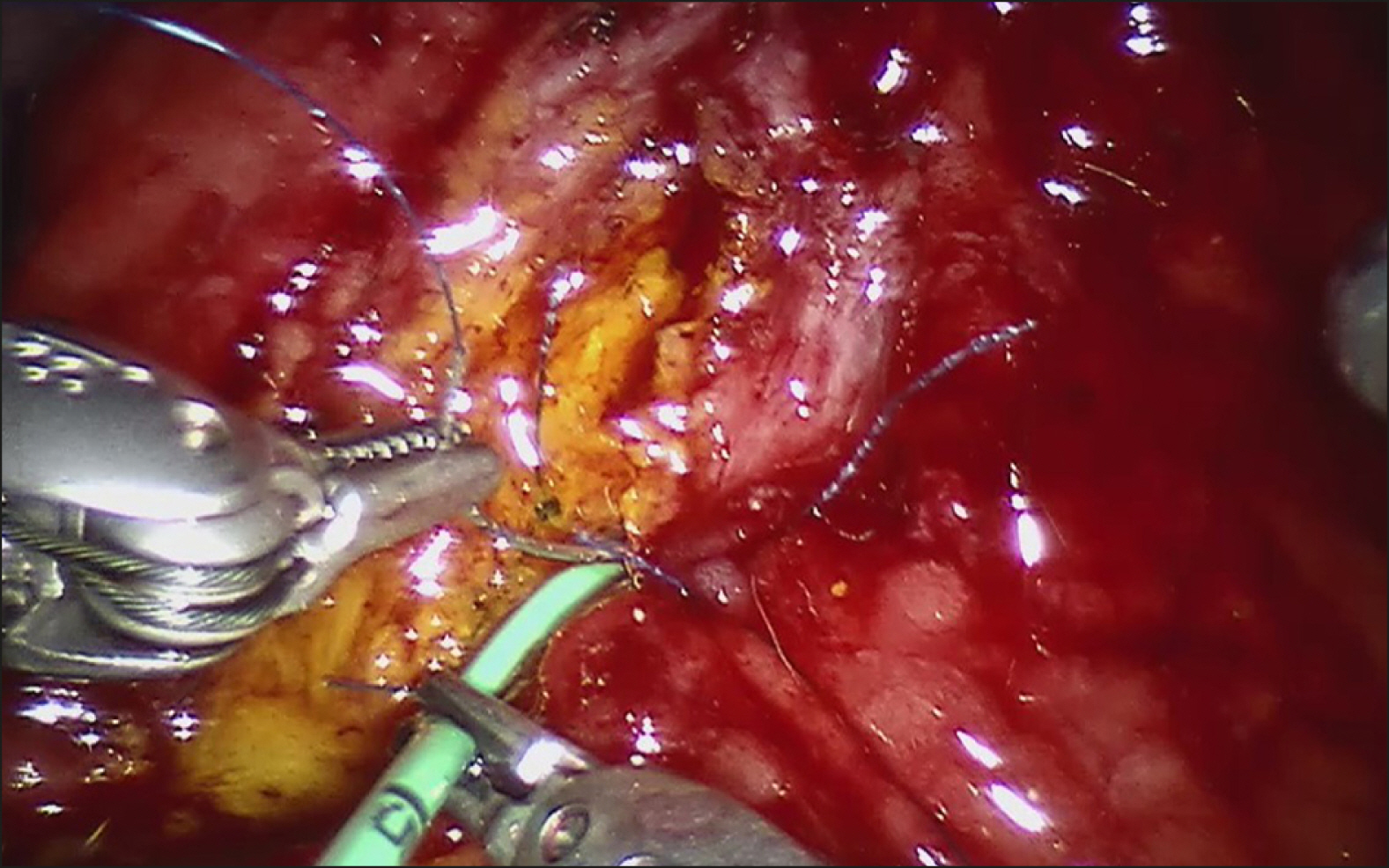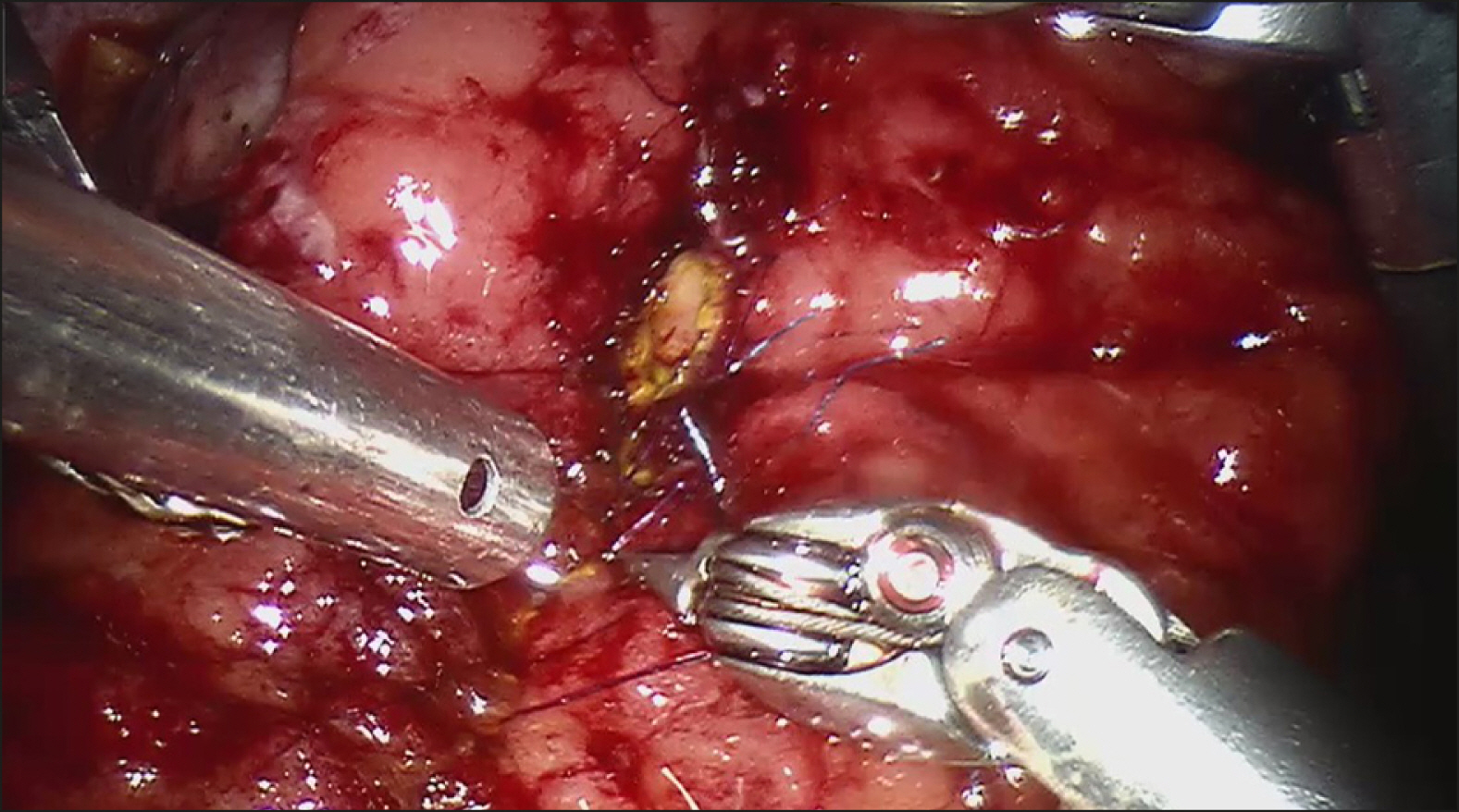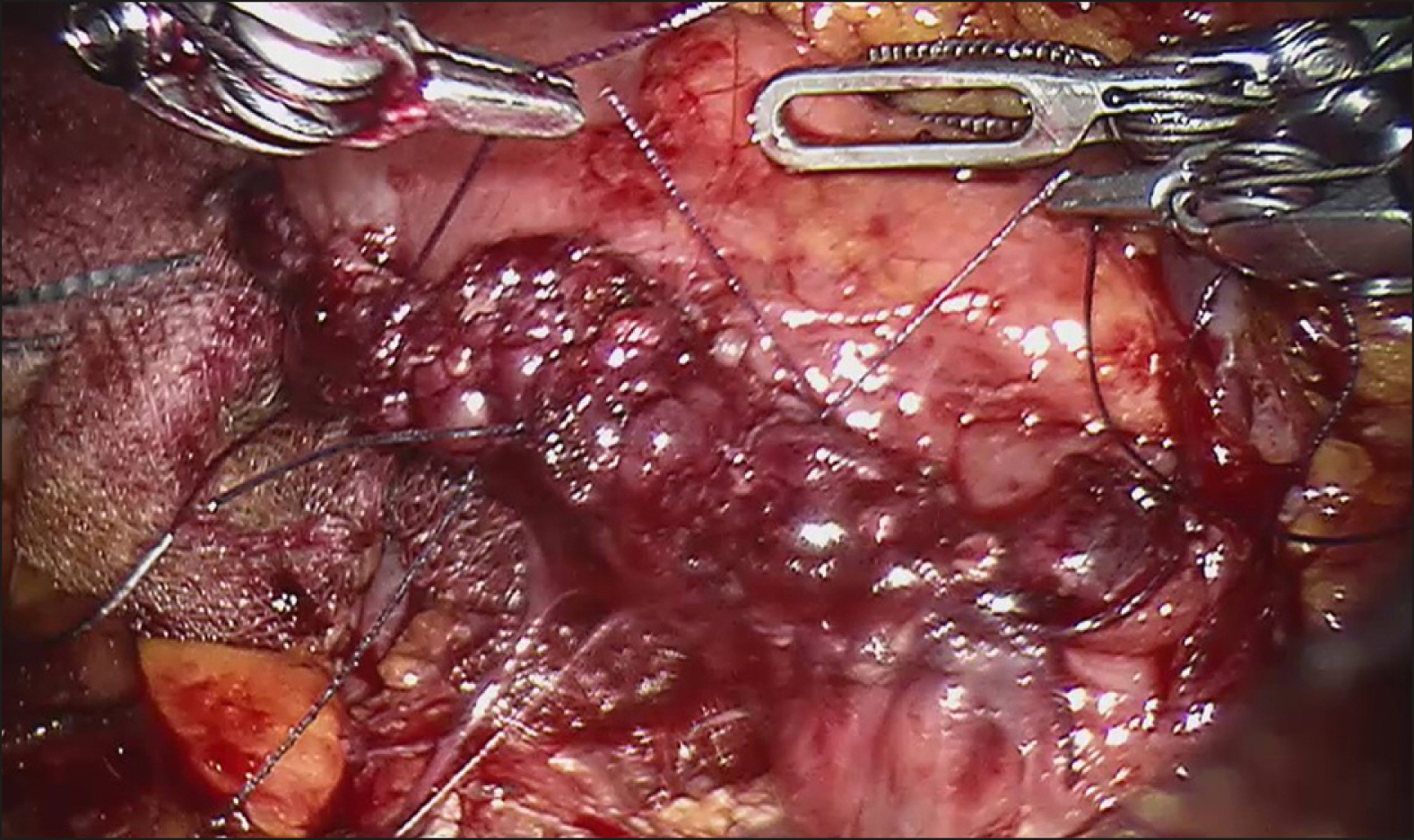Ann Hepatobiliary Pancreat Surg.
2021 Feb;25(1):150-154. 10.14701/ahbps.2021.25.1.150.
Robotic transduodenal ampullectomy: Case report and review of the literature
- Affiliations
-
- 1Department of Hepatopancreatobiliary and Transplant Surgery, Singapore General Hospital, Singapore
- 2Duke-National University of Singapore Medical School, Singapore
- KMID: 2513190
- DOI: http://doi.org/10.14701/ahbps.2021.25.1.150
Abstract
- Ampullary neoplasms are relatively uncommon lesions with a risk of progression to malignancy. Depending on its nature, size and location, it may be best treated with endoscopic papillotomy, pancreaticoduodenectomy or transduodenal ampullectomy. Transduodenal ampullectomy offers a higher chance of complete resection compared to endoscopic papillotomy, and carries lower morbidity than a pancreaticoduodenectomy, making it the ideal choice for localised ampullary tumour not involving the ducts but not amenable to complete endoscopic resection. While traditionally performed via open surgery, it has been attempted via laparoscopic approach and more recently robotic approach. We present a case of a 63-year-old man who underwent a robotic transduodenal ampullectomy for ampullary adenoma with high grade dysplasia, and review the literature surrounding robotic transduodenal ampullectomy.
Figure
Reference
-
1. Albores-Saavedra J, Schwartz AM, Batich K, Henson DE. 2009; Cancers of the ampulla of vater: demographics, morphology, and survival based on 5,625 cases from the SEER program. J Surg Oncol. 100:598–605. DOI: 10.1002/jso.21374. PMID: 19697352.
Article2. Stolte M, Pscherer C. 1996; Adenoma-carcinoma sequence in the papilla of Vater. Scand J Gastroenterol. 31:376–382. DOI: 10.3109/00365529609006414. PMID: 8726307.
Article3. Nappo G, Gentile D, Galvanin J, Capretti G, Ridolfi C, Petitti T, et al. 2020; Trans-duodenal ampullectomy for ampullary neoplasms: early and long-term outcomes in 36 consecutive patients. Surg Endosc. 34:4358–4368. DOI: 10.1007/s00464-019-07206-x. PMID: 31646438.
Article4. Halsted WS. 1899; Contributions to the surgery of the bile passages, especially of the common bile-duct. Boston Med Surg J. 141:645–654. DOI: 10.1056/NEJM189912281412601.
Article5. Rosen M, Zuccaro G, Brody F. 2003; Laparoscopic resection of a periampullary villous adenoma. Surg Endosc. 17:1322–1323. DOI: 10.1007/s00464-002-4527-4. PMID: 12799897.6. Wong FCH, Lai ECH, Chung DTM, Tang CN. 2017; Robotic transduodenal excision of ampullary tumour. Hepatobiliary Surg Nutr. 6:312–316. DOI: 10.21037/hbsn.2016.12.04. PMID: 29152477. PMCID: PMC5673755.
Article7. Downs-Canner S, Van der Vliet WJ, Thoolen SJ, Boone BA, Zureikat AH, Hogg ME, et al. 2015; Robotic surgery for benign duodenal tumors. J Gastrointest Surg. 19:306–312. DOI: 10.1007/s11605-014-2668-0. PMID: 25348238. PMCID: PMC4529990.
Article8. Kim J, Choi SH, Choi DW, Heo JS, Jang KT. 2011; Role of transduodenal ampullectomy for tumors of the ampulla of Vater. J Korean Surg Soc. 81:250–256. DOI: 10.4174/jkss.2011.81.4.250. PMID: 22111080. PMCID: PMC3219850.
Article9. Whipple AO, Parsons WB, Mullins CR. 1935; Treatment of carcinoma of the ampulla of Vater. Ann Surg. 102:763–779. DOI: 10.1097/00000658-193510000-00023. PMID: 17856666. PMCID: PMC1391173.10. Goh BKP, Low TY, Lee SY, Chan CY, Chung AYF, Ooi LLPJ. 2019; Initial experience with robotic pancreatic surgery in Singapore: single institution experience with 30 consecutive cases. ANZ J Surg. 89:206–210. DOI: 10.1111/ans.14673. PMID: 29799169.
Article11. Goh BKP, Low TY, Kam JH, Lee SY, Chan CY. 2019; Initial experience with laparoscopic and robotic surgery for the treatment of periampullary tumours: single institution experience with the first 30 consecutive cases. ANZ J Surg. 89:E137–E141. DOI: 10.1111/ans.15033. PMID: 30805992.
Article12. Low TY, Goh BKP. 2019; Initial experience with minimally invasive extended pancreatectomies for locally advanced pancreatic malignancies: report of six cases. J Minim Access Surg. 15:204–209. DOI: 10.4103/jmas.JMAS_69_18. PMID: 30416147. PMCID: PMC6561074.13. Goh BKP, Zeng G, Low TY, Chua DW, Koh YX, Lim KI. 2020; Changing trends and outcomes associated with the adoption of minimally-invasive pancreato-biliary surgery: contemporary experience of a 'self-taught' early adopter in Southeast Asia. J Minim Access Surg. 16:341–347. DOI: 10.4103/jmas.JMAS_94_19. PMID: 31929225. PMCID: PMC7597885.
Article14. Goh BK, Low TY, Koh YX, Lee SY, Teo JY, Kam JH, et al. 2020; Changing trends and outcomes associated with the adoption of minimally invasive pancreatic surgeries: a single institution experience with 150 consecutive procedures in Southeast Asia. J Minim Access Surg. 16:404–410. DOI: 10.4103/jmas.JMAS_127_19. PMID: 31571669. PMCID: PMC7597893.
Article15. Lee JW, Choi SH, Chon HJ, Kim DJ, Kim G, Kwon CI, et al. 2019; Robotic transduodenal ampullectomy: a novel minimally invasive approach for ampullary neoplasms. Int J Med Robot. 15:e1979. DOI: 10.1002/rcs.1979. PMID: 30578741.
Article16. Hong S, Song KB, Lee YJ, Park KM, Kim SC, Hwang DW, et al. 2018; Transduodenal ampullectomy for ampullary tumors - single center experience of consecutive 26 patients. Ann Surg Treat Res. 95:22–28. DOI: 10.4174/astr.2018.95.1.22. PMID: 29963536. PMCID: PMC6024084.
Article17. Goh BK, Teo RY. 2020; Current status of laparoscopic and robotic pancreatic surgery and its adoption in Singapore. Ann Acad Med Singap. 49:377–383. DOI: 10.47102/Annals-acadmedsg.202063. PMID: 32712635.
- Full Text Links
- Actions
-
Cited
- CITED
-
- Close
- Share
- Similar articles
-
- Which one will you choose; open, laparoscopic, or robotic transduodenal ampullectomy?: a case report
- Role of transduodenal ampullectomy for tumors of the ampulla of Vater
- Hand Assisted Laparoscopic Transduodenal Ampullary Mass Excision
- Transduodenal Ampullectomy in Ampullary Neoplasm
- Safety of duodenal ampullectomy for benign periampullary tumors

